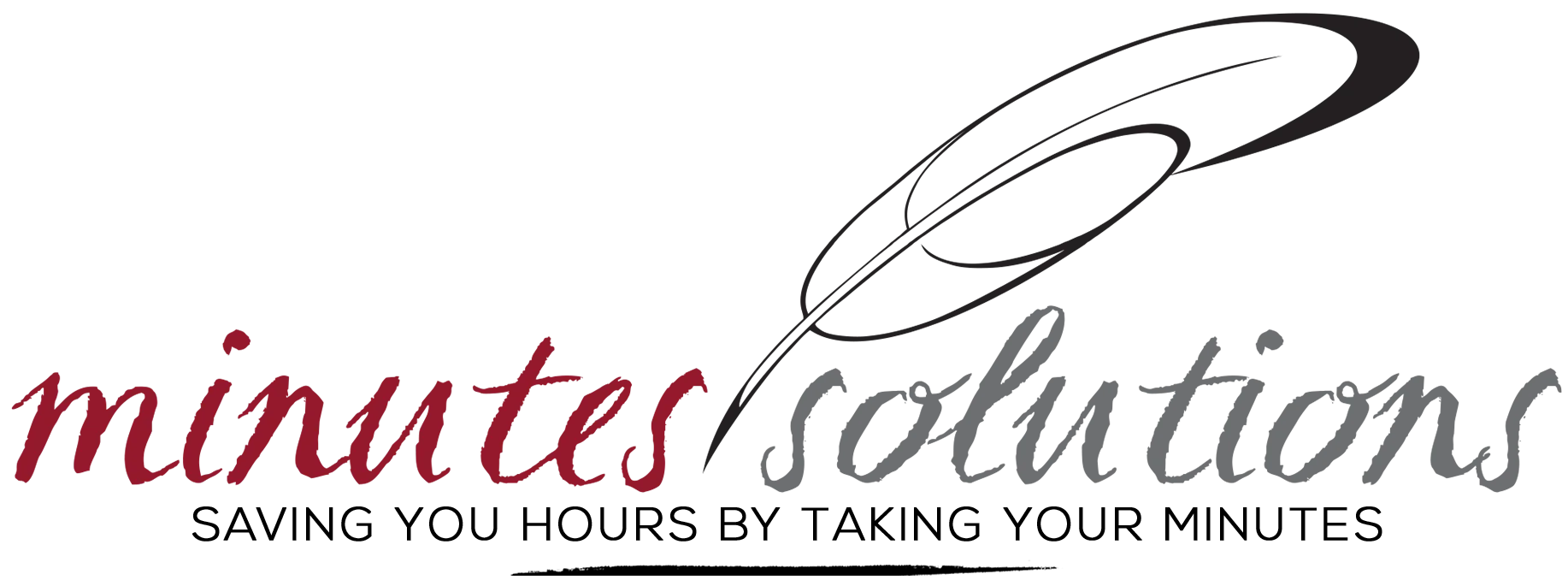Organization: The Canadian Society of Association Executives (CSAE)
Industry: Professional Associations / Non-Profit
Challenges
- Taking minutes prevented staff and leadership from focusing on core tasks and projects.
- Reliance on staff to attend each meeting while performing multiple duties simultaneously, including taking minutes, managing the technical aspects of virtual meetings, and actively participating in discussions.
- Ensuring accuracy and prompt completion of the meeting minutes.
- An inefficient and time-consuming minutes approval process caused by unclear and incomplete information.
Results
- Overall meeting documentation and adherence to best practices improved significantly, allowing CSAE to present a model of good governance practices to its members.
- Much greater meeting efficiency, both in the minute-taking process and in allowing the executive team to fully engage in the meeting proceedings.
- With an improved workflow, the time saved on the minute taking, editing, and approval process was used by the finance team to complete the annual audit, as well as month-end and year-end tasks.
- The administrative team was able to focus on providing in-meeting tech support and spend more time assisting members outside of meetings.
Enhancing Association Excellence
The Canadian Society of Association Executives (CSAE) is a not-for-profit professional membership organization that serves association professionals and suppliers in Canada. CSAE offers robust networking and learning opportunities, both online and in person, including an educational program leading to the Certified Association Executive (CAE®) designation.
“We also produce publications, conduct research, and pursue other knowledge transfer opportunities to keep members informed about the latest trends, innovations, and best practices in the sector and beyond,” says Melissa McGuckin. Melissa is an Executive Assistant at CSAE, and she leads executive support for the President & CEO, Board of Directors, and Board Governance Committees.
Recognizing the significant amount of time involved in taking minutes and the need to improve the quality of their meeting minutes, CSAE turned to Minutes Solutions. CSAE’s primary objectives were to streamline the minute-taking process for their board meetings and annual general meetings (AGMs), as well as to ensure important action items were properly documented. “The administrative or executive assistant would record the meeting minutes,” Melissa says. “At times, the administrative/executive assistant would also be responsible for simultaneously facilitating other aspects of the meeting such as screen-sharing, coordinating logistics for virtual and in-person meeting access, etc.” CSAE aimed to not only improve their own minute-taking process but to also provide a valuable resource for members looking for a better way of producing high-quality meeting minutes.
Navigating Remote Realities
The COVID-19 pandemic forced organizations worldwide to transform their work environments, and the CSAE was no exception. With the shift to remote work and virtual/hybrid board meetings, CSAE realized the need for a reliable minute-taking service.
Casey Pope, who manages the awards and recognition program and end-to-end volunteer experience, says, “CSAE is always considering opportunities to improve efficiency and leverage resources to adopt and promote to our members to advance association excellence.”
Since entrusting Minutes Solutions to minute all their meetings, CSAE has seen significant improvements in “meeting efficiency, accurate documentation of motions, clear action items, and follow-up information.” As one step in their preparation, Minutes Solutions requires a meeting package to be provided to the minute taker before the meeting so “we did not have any reservations regarding knowledge about the organization or meeting discussions,” Casey says.
“When we first started working with Minutes Solutions, we were only comparing it to the current practice of taking minutes and saw the partnership as a great opportunity to improve our best practices and to be a model for continuous improvement to our members.”
Seamless Integration
Replacing a process that has existed in an organization for a long time can be daunting, but CSAE’s experience was anything but. The Minutes Solutions team worked collaboratively with CSAE, creating an experience that was “efficient and provided an easy transition from the old way to the new,” says Melissa.
The initial onboarding process involved CSAE’s President & CEO, the partnerships team, and an administrative assistant. Before implementation, “the Board was also informed of the changes to the minute-taking practices,” Casey says – and they were quick to adopt the new process.
“CSAE has worked collaboratively with Minutes Solutions since 2020. Over the years, we have continued to successfully work with Minutes Solutions for our Board meetings, Board governance meetings, and AGMs.”
Before choosing Minutes Solutions to meet their minute-taking needs, CSAE did not have experience using an external service or tool, but both the CSAE team and Board were quick to get on board with the new practice. Casey says there has been positive feedback from the Board on the experience, and they immediately saw an improvement in the minutes.
Unlocking Operational Efficiency
Delegating minute-taking to Minutes Solutions has proven invaluable for CSAE, allowing teams to focus on core responsibilities. Casey explains that the finance team can dedicate more time to critical tasks, such as audits, while administrative staff can provide enhanced member support and technical assistance during meetings. “This has been especially beneficial for our AGM and meetings that occur post-AGM where recording is crucial.”
“The team from Minutes Solutions is always wonderful to work with. Whether it’s organizing a meeting or interacting with the minute-takers themselves, we know that we’ll always receive accurately recorded minutes as well as courteous and kind service.”
According to Melissa, using Minutes Solutions has been a time saver, allowing the staff and leadership team to participate fully in meetings and accomplish more as a whole. “Each year, CSAE provides the minutes from the previous year’s AGM to our membership. Having the ability to trust the accuracy and efficiency with which Minutes Solutions produces our minutes has allowed us to quickly provide information to the membership regarding decisions that were made and decreased the amount of time our administrative team needs to edit, update, and get information out, both internally and externally.”
Casey mentioned that CSAE continually receives positive feedback from the board members, volunteers, and members. “Our board members are happy and enjoy having Minutes Solutions as a partner. They understand how important it is to have accurate minutes as Executive Directors and CEOs in their own associations. I find it easy to schedule Minutes Solutions, as have others on the team who have gone through the process. We find it to be a quick, easy, painless solution that makes minute-taking an easy task.”
Amplifying Organizational Productivity
With Minutes Solutions, CSAE has transcended previous challenges of time-consuming minute-taking and editing, allowing them to achieve greater operational efficiency. Melissa underscores the peace of mind derived from relying on a trusted source for accurate and timely minutes, ultimately increasing productivity and reducing internal stress.
“I would say if you’re an organization that requires minute-taking, have a small staff, would like speed, ease, clarity, and increased peace of mind, or work on tight deadlines, then Minutes Solutions is a fabulous option. It’s something that our organization has found beneficial to increasing productivity while decreasing internal workload and stress.”






